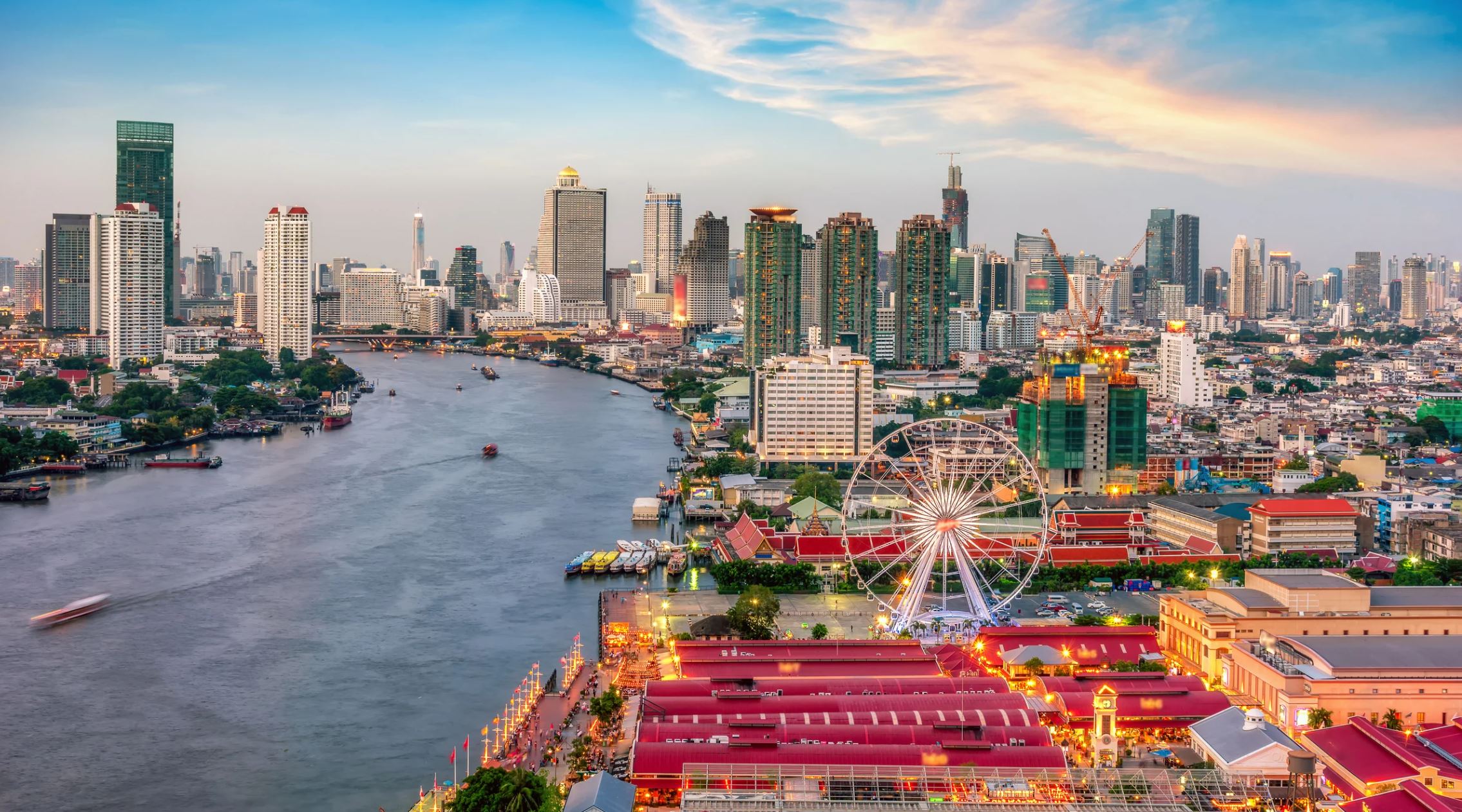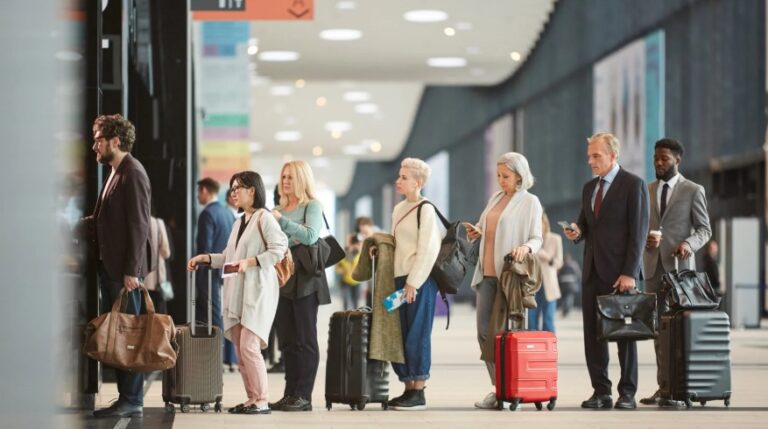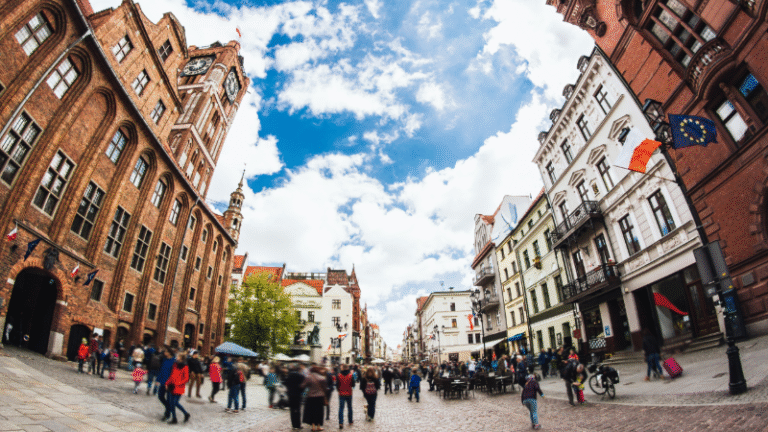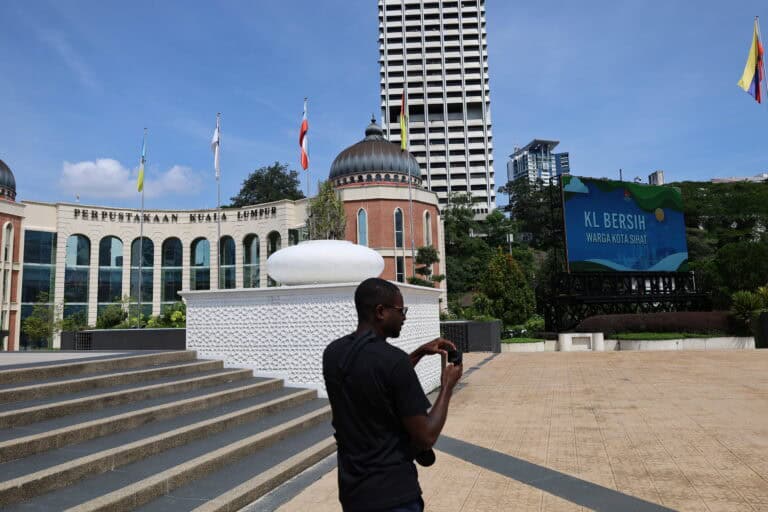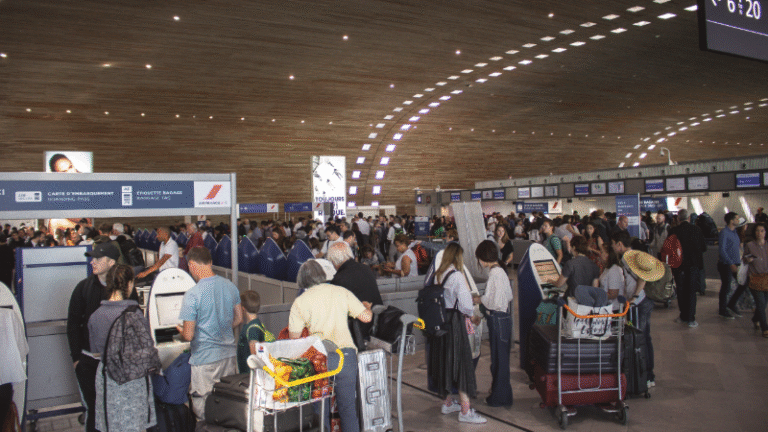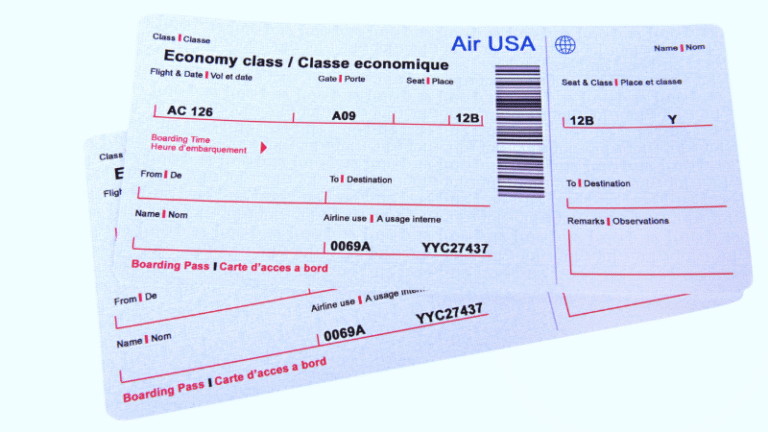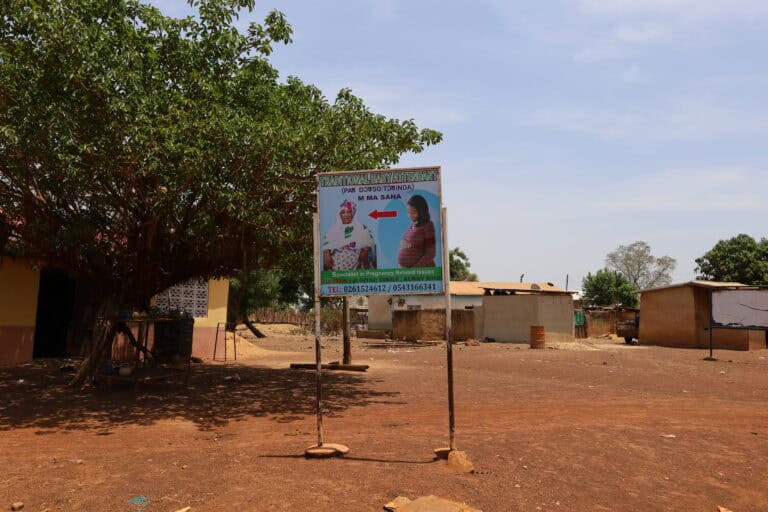10 BEST Places to Live in Thailand (2025)
Thailand isn’t just for backpackers and digital nomads… it’s also one of the best countries in the world for expats looking for a vibrant, affordable, and culturally rich place to call home. I’m Kojo, and after years of traveling through Southeast Asia, I’ve met expats from all walks of life who’ve fallen in love with Thailand’s food, beaches, people, and lifestyle.
So in this guide, I’m breaking down the 10 best places to live in Thailand in 2025, based on real experiences, community feedback, and what you actually get when the vacation ends and real life begins.
1. Chiang Mai – Best for Digital Nomads & Nature Lovers
Chiang Mai, in northern Thailand, remains one of the top spots for digital nomads, creatives, and retirees. With its blend of ancient temples, green hills, and café culture, it’s ideal if you want a peaceful lifestyle without sacrificing convenience.
Pros:
- Low cost of living
- Cooler weather than most of Thailand
- Great expat community and co-working spaces
- Rich culture and festivals
Cons:
- Air pollution during burning season (Feb–Apr)
- Not ideal if you want beaches
Kojo’s Take: “Chiang Mai feels like the Thai version of a slow, soulful city. It’s calm, affordable, and full of soul. Just don’t underestimate the smoky season.”
Monthly Cost of Living in Chiang Mai
| Expense | Estimated Cost (USD) |
|---|---|
| Rent (1BR, City Center) | $300 – $500 |
| Utilities & Internet | $80 – $120 |
| Food & Groceries | $200 – $300 |
| Transportation | $30 – $50 |
| Total Monthly Cost | $610 – $970 |
2. Bangkok – Best for Big City Life
Thailand’s capital is chaotic, electric, and full of opportunity. If you thrive in urban energy and want everything from street food to skyscrapers, Bangkok might be your perfect match.
Pros:
- World-class hospitals and international schools
- Great shopping, nightlife, and food scene
- Well-connected by BTS/MRT transit
- Job opportunities for English speakers
Cons:
- Traffic can be brutal
- Hot, humid, and noisy
Kojo’s Take: “Bangkok is overwhelming at first, but once you figure out how to move with its rhythm, it’s addictive. I keep going back.”
Monthly Cost of Living in Bangkok
| Expense | Estimated Cost (USD) |
|---|---|
| Rent (1BR, City Center) | $500 – $900 |
| Utilities & Internet | $100 – $150 |
| Food & Groceries | $300 – $450 |
| Transportation | $50 – $80 |
| Total Monthly Cost | $950 – $1,580 |
3. Phuket – Best for Beach Lovers and Resort Living
Phuket is Thailand’s largest island, and despite being touristy in parts, it’s also home to expats looking for beach life with modern amenities.
Pros:
- Beautiful beaches and coastal scenery
- Big expat population
- International schools and hospitals
- Easy access to direct flights
Cons:
- High cost of living in tourist zones
- Some areas can feel overcrowded
Kojo’s Take: “Phuket is like the Thailand of postcards—but with supermarkets and shopping malls. Great if you want the island vibe without going remote.”
Monthly Cost of Living in Phuket
| Expense | Estimated Cost (USD) |
|---|---|
| Rent (1BR, City Center) | $500 – $850 |
| Utilities & Internet | $100 – $130 |
| Food & Groceries | $250 – $400 |
| Transportation | $40 – $60 |
| Total Monthly Cost | $890 – $1,440 |
4. Pai – Best for a Bohemian, Budget-Friendly Lifestyle
Tucked in the mountains north of Chiang Mai, Pai is a tiny town that attracts artists, yogis, and spiritual seekers. It’s not for everyone, but if you want slow living, this is it.
Pros:
- Very affordable
- Artistic, laid-back vibe
- Beautiful mountain views and waterfalls
Cons:
- Limited healthcare options
- Not ideal for families or long-term work
Kojo’s Take: “Pai isn’t a place you visit… it’s a feeling. If you’re into vibes, introspection, and $1 smoothies, welcome home.”
Monthly Cost of Living in Pai
| Expense | Estimated Cost (USD) |
|---|---|
| Rent (1BR, City Center) | $200 – $400 |
| Utilities & Internet | $60 – $100 |
| Food & Groceries | $150 – $250 |
| Transportation | $20 – $40 |
| Total Monthly Cost | $430 – $790 |
5. Hua Hin – Best for Retirees and Families
Located just a few hours south of Bangkok, Hua Hin is a beach town that blends calm with comfort. It’s popular with retirees, and more families are moving in thanks to good schools and safety.
Pros:
- Quiet and clean
- Great golf courses and seaside resorts
- Strong healthcare system
- Close to Bangkok
Cons:
- Nightlife is limited
- Not as culturally immersive as other cities
Kojo’s Take: “If you want a peaceful life by the beach without going too far from Bangkok, Hua Hin is a solid choice. It’s low-key, but in a good way.”
Monthly Cost of Living in Hua Hin
| Expense | Estimated Cost (USD) |
|---|---|
| Rent (1BR, City Center) | $400 – $700 |
| Utilities & Internet | $80 – $120 |
| Food & Groceries | $220 – $350 |
| Transportation | $30 – $50 |
| Total Monthly Cost | $730 – $1,220 |
6. Koh Samui – Best for Island Life with Comfort
Koh Samui offers that tropical-island life with enough infrastructure to live comfortably. It’s quieter than Phuket but still developed.
Pros:
- Gorgeous beaches and laid-back lifestyle
- Plenty of yoga, wellness, and detox retreats
- Good international schools and clinics
Cons:
- More expensive than mainland Thailand
- Can get isolated in rainy season
Kojo’s Take: “Samui hits the sweet spot: you get the beach, comfort, and calm… without being totally cut off.”
Monthly Cost of Living in Koh Samui
| Expense | Estimated Cost (USD) |
|---|---|
| Rent (1BR, City Center) | $450 – $800 |
| Utilities & Internet | $90 – $130 |
| Food & Groceries | $250 – $400 |
| Transportation | $40 – $60 |
| Total Monthly Cost | $830 – $1,390 |
7. Krabi (Ao Nang) – Best for Outdoor Adventure
Krabi is the gateway to rock climbing, jungle trekking, and island hopping. Ao Nang, in particular, is a popular expat hub.
Pros:
- Jaw-dropping natural beauty
- Active lifestyle (diving, climbing, kayaking)
- Less crowded than Phuket
Cons:
- Can feel remote
- Limited shopping and entertainment
Kojo’s Take: “Krabi feels like an outdoor playground. If you love nature more than nightlife, this is where to be.”
Monthly Cost of Living in Krabi (Ao Nang)
| Expense | Estimated Cost (USD) |
|---|---|
| Rent (1BR, City Center) | $350 – $650 |
| Utilities & Internet | $80 – $120 |
| Food & Groceries | $220 – $320 |
| Transportation | $30 – $50 |
| Total Monthly Cost | $680 – $1,140 |
8. Chiang Rai – Best for Cultural Depth and Peace
Chiang Rai is often overshadowed by Chiang Mai, but it’s just as rich in culture… and even more peaceful.
Pros:
- Super quiet and affordable
- Lots of temples and historical charm
- Cooler weather
Cons:
- Fewer international amenities
- Not great for nightlife or young expats
Kojo’s Take: “If Chiang Mai is calm, Chiang Rai is still. It’s great for meditation, art, and escaping the crowds.”
Monthly Cost of Living in Chiang Rai
| Expense | Estimated Cost (USD) |
|---|---|
| Rent (1BR, City Center) | $250 – $450 |
| Utilities & Internet | $70 – $110 |
| Food & Groceries | $180 – $250 |
| Transportation | $20 – $40 |
| Total Monthly Cost | $520 – $850 |
9. Pattaya – Best for Budget Living with Big City Vibes
Often misunderstood, Pattaya isn’t just about nightlife. It has beaches, malls, and a growing expat scene that appreciates its convenience.
Pros:
- Affordable rent
- Close to Bangkok (2 hours by car)
- Plenty of amenities
Cons:
- Not ideal for families
- Reputation as a party town can be off-putting
Kojo’s Take: “Pattaya has layers. If you can see past the clichés, there’s good living here… especially for budget-conscious expats.”
Monthly Cost of Living in Pattaya
| Expense | Estimated Cost (USD) |
|---|---|
| Rent (1BR, City Center) | $350 – $600 |
| Utilities & Internet | $90 – $130 |
| Food & Groceries | $250 – $350 |
| Transportation | $30 – $50 |
| Total Monthly Cost | $720 – $1,130 |
10. Rayong – Best for Working Expats & Off-the-Radar Life
Rayong is an underrated gem for expats working in Thailand’s industrial or education sectors. It’s more local, less touristy, and still coastal.
Pros:
- Very affordable
- Near beaches but less touristy
- Growing job market in industry and education
Cons:
- Not as much English spoken
- Fewer entertainment options
Kojo’s Take: “Rayong is where you go if you want to live like a local… but still catch a weekend sunset by the beach.”
Monthly Cost of Living in Rayong
| Expense | Estimated Cost (USD) |
|---|---|
| Rent (1BR, City Center) | $280 – $500 |
| Utilities & Internet | $80 – $120 |
| Food & Groceries | $200 – $300 |
| Transportation | $30 – $50 |
| Total Monthly Cost | $590 – $970 |
Notes from Kojo:
The costs above are in USD and reflect averages for 2025. I pulled them together using a mix of expat feedback, Numbeo data, real conversations I’ve had with people living in Thailand, and my own observations from traveling the country multiple times.
-
Rent is based on 1-bedroom apartments in central areas. If you’re okay living slightly outside the main hub or going more local, you can find much cheaper options.
-
Food & groceries include basic home cooking plus eating out 2–3 times a week (yes, those street food noodles count).
-
Transportation covers local buses, scooters, or Grab rides… not car ownership. In most Thai cities, you don’t really need a car to live well.
From Chiang Mai to Rayong, I’ve walked these streets, spoken to expats over coffee, and scouted neighborhoods myself… so this isn’t just internet research. It’s real talk from the road.
My Final Word
If there’s one thing I’ve learned on this journey through Thailand, it’s that “home” doesn’t always look the way you expect. Sometimes it’s a quiet mountain town where you lose track of time. Other times, it’s a buzzing city that forces you to grow. Or it’s a beach where your biggest decision is whether to have mango sticky rice before or after your swim.
Living in Thailand isn’t just about affordability or sunshine (though you’ll get plenty of both). It’s about finding the kind of lifestyle that matches your soul. That might mean community and culture in Chiang Mai, high-speed energy in Bangkok, or barefoot island mornings in Koh Samui.
I put this list together not just with research, but with heart… from stories shared over street food stalls to late-night chats with long-time expats. So wherever you decide to land, I hope you make it your own.
Take your time. Visit more than one spot. Ask locals questions. And above all… live with intention.
Kojo ✌🏾
